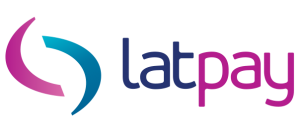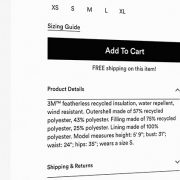What is a payment gateway and why do I need one?
Are you ready to grow your business online? Payment gateways are an essential step to maximising your online revenue and reaching more customers. For those who might need a little refresher on what they are and how they work, take a read of the following article outlining some key points and benefits of a payment gateway to online businesses.
What is a payment gateway?
A payment gateway or third-party service creates a connection between your ecommerce platform and your bank in order to take payments from customers online. Payment gateway software securely authorises credit card payments through the deployment of encryption, allowing sensitive information to be passed from customer to merchant to bank and back. As a security standard, businesses must have a payment gateway or third-party service in order to accept payments online.
How does it work?
The payment gateway sends credit card and other private data between parties in a secure manner to ensure all information is protected while a transaction is being processed. To complete this process, the payment gateway completes a range of tasks within about 3 seconds. To demonstrate the process in action, let’s take a look at how it all plays out.
- Becky has decided to buy a shirt through an online store. Once she’s happy with her choice, she adds the item to a shopping cart and heads to the checkout page.
- The website will open a secure payment page where she enters her credit card details to place the order.
- The payment details are transferred securely from the payment page to the payment gateway.
- The payment gateway will encrypt her credit card information and pass it on to the merchant’s bank to be authorised.
- The merchant’s bank will decide whether or not the transaction should be approved based on a number of factors (whether Becky has gone over her credit limit, whether the card is legitimate, etc) and passes this information back to the payment gateway.
- If the transaction is approved, the payment gateway will notify the merchant and the customer that payment has been accepted.
- If the transaction is denied, a message will appear on Becky’s screen notifying her that the payment was declined, and the transaction has been disregarded.
The benefits of a payment gateway to your business:
Although there are a number of alternative methods available for taking payments online, having a payment gateway provides a range of unique benefits to ecommerce businesses. Some of these key benefits include:
Secure payment processing
Data security should be the number one priority for any business. Payment gateways offer the ability to take protected payments via industry-standard encryption technology. With a reputable payment gateway, customers need not worry about their credit card or personal information being intercepted and used without authority. Payment gateways protect both merchant and customer against identity fraud.
Accept payments instantaneously
With a process taking less than 3 seconds, payments can be accepted online in real time. This means that customers don’t need to wait when purchasing their goods and merchants don’t need to wait for payments to be received.
Enable international purchases
With the ability to process transactions in multiple currencies, payment gateways allow you to access a global network of online shoppers. The ability to accept any currency means you can expand your potential target audience and create a worldwide network of customers.
Complete transactions around the clock
With a payment gateway connected to your ecommerce store, you’re always open for business. Consumers can access your store and complete a transaction at any time of the day meaning you can make money even while you sleep or travel.
Keep web users on your page
dPayment gateways enable you to take payment from your customer without directing them to a third-party page; the last thing you want to be doing is guiding traffic away from your website. Having a payment gateway allows you to keep your customers right where you want them – on your web page.
Latpay’s Merchant Facilities
Activating a merchant account can be challenging and sometimes even a little stressful. At Latpay, we make the process straight forward and simple to get your business up and running as soon as possible. With long-standing partnerships with a range of acquiring banks who know and trust our platforms, we’re already known for meeting a range of challenges and volume requirements. We also maintain the highest accreditation for industry data security as a PCI Level 1 Service Provider, meaning banks and customers alike are comfortable and confident in doing business through our gateways.
Latpay services have a strong focus on security, reliability, user experience and customer service driven by our Australian-based headquarters and support centre. If you’re ready to start taking more payments online, get in touch with our team on 07 5515 0402 or learn more about our merchant solutions here.










